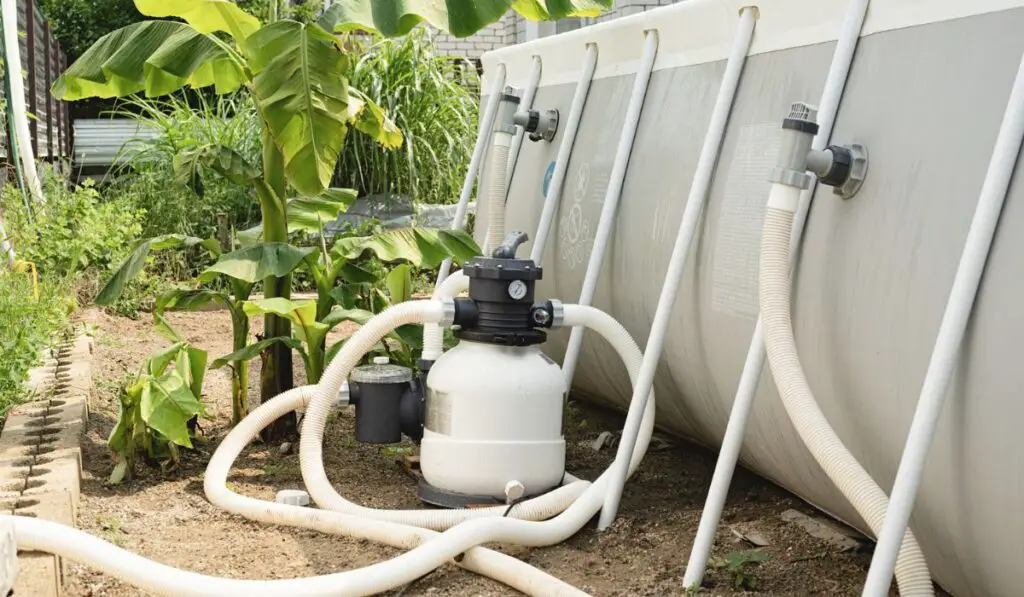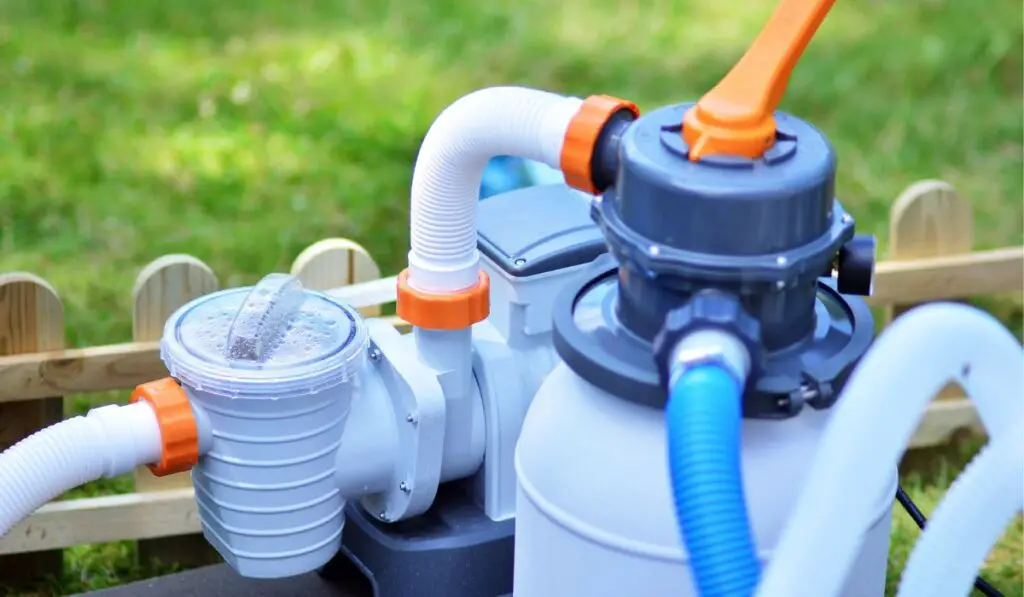Regular pool maintenance can become quite tricky, and backwashing is just one of the challenging tasks that you can’t avoid. Backwashing is essential to ensure your pool is always clean and that the filter runs efficiently. So, the big question is: How do you backwash your pool, and how often should you do it?
You should backwash your pool once a week, or each time the filter gauge indicates a pressure of 8-10 PSI above the initial level. To backwash efficiently without damaging the system, ensure the pump and filtration system are always turned off. Also, keep them off as you reset the filter valve.
Like any other pool maintenance routine, backwashing is crucial to promoting the appeal and longevity of your pool. Otherwise, you’ll be forced to remodel sooner than expected — and potentially spend thousands of dollars in the process. Let’s get started so you know how and when to backwash your pool.
What Does It Mean to Backwash a Pool?

Backwashing is used to describe the filter cleaning method where you essentially reverse the flow of water through your filter system.
Generally, pool filters remove organic material from your pool water by forcing it through a porous medium like sand and returning the clean water to the pool. Over time, however, larger debris builds up in the filter, raising its pressure and reducing the efficiency.
Backwashing dislodges trapped particles and contaminants to prevent damage to your filter, purging them through the waste line or a hose connected to the pool pump. Provided the filter medium is clean, the pressure gauge will always indicate a low pressure reading, and water easily flows in and out of the system.
While backwashing is a great way to clean out clogged filters, there are times you shouldn’t do it. For example, if your pool has algae, you should completely bypass the filter and vacuum directly. Remember, live algae can easily pass through the filter media and find its way back into the pool.
Moreover, you should vacuum directly into the water and down the drain if an unusually high level of dirt and debris has recently ended up in your pool. That goes if there’s been a storm or there’s construction work happening nearby.
And before we get too far – remember the sand in your sand filter, or the cartridge filter elements you have, don’t last forever. For the most common type of sand filter, backwashing regularly is necessary, but you should also expect to replace the sand with fresh pool filter sand (on Amazon) every few years.
How Often Should You Backwash Your Pool?
As a rule of thumb, you should backwash your pool once a week or during your scheduled maintenance. As an industry standard, most people backwash when the filter gauge reads 8 to 10 PSI (pounds per square inch) above the starting level (clean pressure).
For example, if your filter normally runs at 15 PSI but the reading jumps to 23 PSI, it’s time to do a backwash.
Ultimately, the frequency of backwashing largely depends on how many people use your swimming pool, the type of filtration system you have, and its position. If there are lots of trees and shrubs around your pool, you’ll need a lot of backwashing to get rid of the organic debris.
You should also backwash following a major storm or algae outbreak in your area. And if deciduous trees surround your pool, it’s good to schedule a backwash once all the foliage has dropped.
If you have a DE (diatomaceous earth) filter system, you’ll have to tear it down and clean it at least six times a year. On the other hand, you can tear down a sand filter twice a year and backwash it monthly.
Please note, however, that you shouldn’t backwash your pool too often. Every time you backwash, the filter loses a tiny amount of sand, and the sand level will eventually lower to a point the filter becomes less efficient.
Moreover, you’ll be wasting a lot of water during the backwash. It’s therefore important to figure out the best backwashing schedule and stick to it.
How to Backwash Your Pool Filter
If you’re not looking to hire the services of a pool maintenance team, you can still backwash your sand filter by following these steps:
- Turn off the pump and filtration system, then clamp your backwash hose to the water outlet.
- Set your filter value to ‘Backwash,’ ensuring the handle locks securely. Check if water flows through the hose or equipment in the view glass.
- Wait for about 10 minutes until the water runs clear, then turn off the pump to end the backwashing.
- Put the filter valve handle in the ‘Rinse‘ position, ensuring the handle locks in place.
- Let the rinse process run for around 1 minute, then turn off the pump. Alternatively, turn it off once you see the water has cleared.
- Close the skimmer valve to prevent the pool’s water from re-entering the filter.
- Next, empty and clean the skimmer basket, then position them back in place. Be sure to do the same with the hair catcher.
- Now, open the skimmer valves and reset the filter valve to ‘Filter.’ Make sure the handle locks in place before you turn the pump on.
How to Backwash a DE Filter
The steps for backwashing a DE filter are a bit different, and here’s how to do it properly:
- Switch off your pool pump and the filtration system.
- Set the filter value to ‘Backwash‘ while ensuring the handle locks properly in position. Next, power on the pump and check to see if water flows through the view glass.
- Wait until the filter view glass is clear.
- You can switch between ‘Rinse‘ and ‘Backwash‘ a couple of times to remove the DE material. Just be sure to turn off the pump each time you tweak the valve settings.
- Discard the DE material in the trash.
- With the pump turned off, disassemble the filter. You may have to change the timer settings in this step.
- Open the release valve and drain the filter thoroughly. For best results, remove the drain plug from the bottom of the filter. This way, all the residual water will drain from the bottom of the tank.
Tips and Tricks for Backwashing

There’s no perfect cookie-cutter approach for backwashing, and you can always employ a couple of tips and tricks to achieve remarkable results. To crown it all, you don’t need pro DIY skills up your sleeve to do it.
Here’s an overview of some of the things you should do:
- Ensure your pump is always turned off as you backwash or reset the filter valve. Failure to do so could result in damage to some critical component or the entire system.
- You lose some water as you backwash — it’s a no-brainer. While you can’t avoid that completely, you can always reduce the amount of water you lose by not overdoing the backwashing. Closely monitor the water color through the view glass and be ready to stop it once it’s satisfactorily clear.
- You’re always losing some of your sand along with the debris and dirt each time you backwash. You can minimize the amount of sand blown back into your pool by running the filter system on the “Rinse” setting for a minute as you top up the sand.
- If you notice your backwash valve is becoming increasingly difficult to turn, experts recommend you do a teardown and lubricate the valve. Otherwise, you’ll be forced to deal with annoying leaks.
- When you reassemble the filter system after backwashing, take note of all the parts. This goes for the grids, cartridges, valves, etc. Don’t rush the reassembly because most filter leaks stem from mistakes you make during this time.
